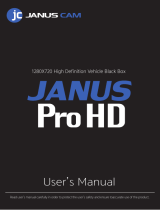
JANUS 2010 Hand-Held Computer User’s Manual (4MB)
nuggnugg
CODECODEhel
1-14
Where Do You Go From Here?
Now that your new JANUS reader is up and running, you can use this manual
to learn how to perform these tasks:
For Help With This Task See This Chapter
To learn to use the reader’s keypad, display, audio
signals, batteries, COM ports, drives, and scanner
Chapter 2, “Learning How to Use the Reader”
To learn to use the reader’s software and manage its
disk space and memory
Chapter 3, “Learning About the Software”
To learn to use PC cards in the reader’s PC card drive
or drives
Chapter 4, “Using PC Cards in the Reader”
To learn about configuration files and ways to change
the reader’s configuration
Chapter 5, “Configuring the Reader”
To add the reader to your data collection system and
learn how to communicate with other devices
Chapter 6, “Networking the Reader”
To run IRL programs on the reader Chapter 7, “Working With IRL”
To configure the reader for an international language
and learn to use the matching keypad
Chapter 8, “Preparing the Reader for International
Use”
To learn to boot the reader, solve problems, and
respond to error messages
Chapter 9, “Booting and Resetting the Reader,” and
Chapter 10, “Troubleshooting”
















